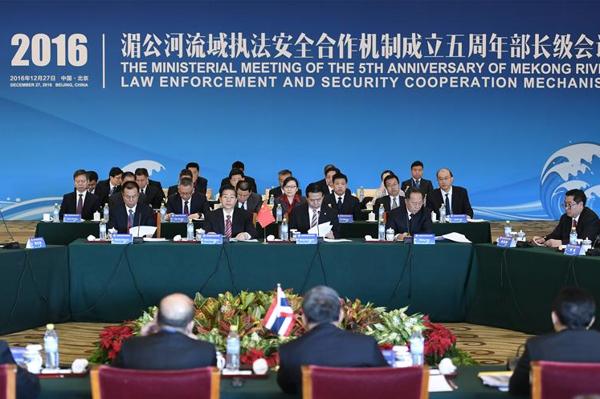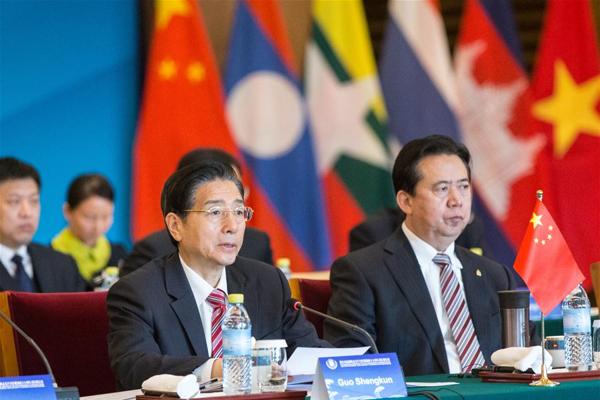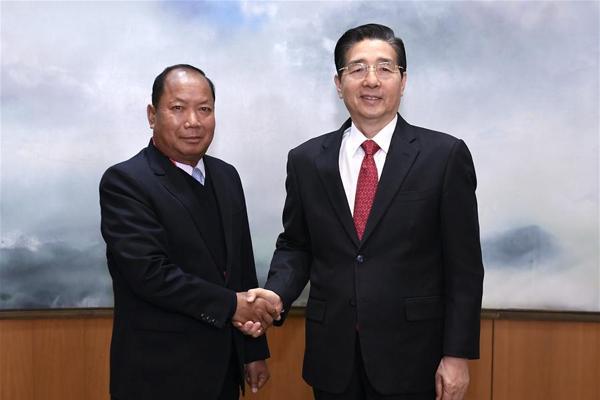
State Councilor and Minister of Public Security Guo Shengkun attends the ministerial meeting of the fifth anniversary of Mekong River law enforcement and security cooperation mechanism in Beijing, capital of China, Dec 27, 2016. [Photo/Xinhua]

State Councilor and Minister of Public Security Guo Shengkun (L, front) attends the ministerial meeting of the fifth anniversary of Mekong River law enforcement and security cooperation mechanism in Beijing, capital of China, Dec 27, 2016.
Senior officials from the six countries along the Mekong River gathered in Beijing on Dec 27 for a ministerial meeting, vowing to strengthen law enforcement and security cooperation.
The gathering came at the fifth anniversary of the Mekong River law enforcement and security cooperation partnership.
The partnership, which was launched in 2011 after the “Oct 5 massacre” where 13 Chinese sailors were murdered by a drug ring, aims to crack down on transnational crimes along the Mekong and safeguard regional security and stability.

Public Security Minister Guo Shengkun (R) meets with his Lao counterpart Somkeo Silavong, who is here to attend the ministerial meeting of the fifth anniversary of Mekong River law enforcement and security cooperation mechanism, in Beijing, capital of China, Dec 27, 2016.
Lauding the partnership as “a successful paradigm of regional law enforcement and security cooperation,” Guo Shengkun, China’s public security minister, said China is ready to deepen cooperation with all sides in joint patrols along the river, anti-terrorism, drug-control and border management.
He also suggested a center for law enforcement and security cooperation along the Mekong River be set up to share information and coordinate actions.
The partnership involves China, Laos, Myanmar and Thailand, with Cambodia and Vietnam acting as observing states.
The Mekong River, known as the Lancang in the Chinese stretch, runs through China, Laos, Myanmar, Thailand, Cambodia and Vietnam, and is an important waterway for transnational shipping.
